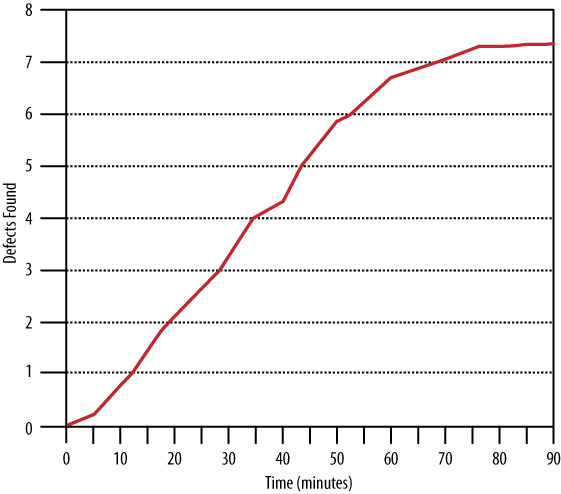A Developer Does a Little Code Review
There are a million ways to do a code review, but there’s one component that’s common to all—a single developer critically examining code. So it makes sense to ask what the data tells us about developers diving into code by themselves, without distraction and without discussion.
What are the best practices during quiet contemplation?
Focus Fatigue
How much time should you spend on a code review in one sitting?
Figure 18-1 maps how efficient we are at finding defects over time [Dunsmore 2000]. The horizontal axis plots time passing; the vertical is the average number of defects a person found at this time index.

Figure 18-1. After 60‒90 minutes, our ability to find defects drops off precipitously
Looking early on in the code review, there’s a clear linear relationship between time and defects: every 10 minutes another defect is found (on average). This is encouraging—the more time spent in the review, the more defects are found.
That’s really efficient if you stop and think about it. What other software development processes do you know in which a new bug is found (and often fixed) every 10 minutes? Certainly not in the usual development/QA loop by the time you count the effort by both the tester and the developer.
But around the 60-minute mark, there’s a sudden drop-off. Now another 10 minutes doesn’t necessarily turn up another defect. The efficiency ...
Get Making Software now with the O’Reilly learning platform.
O’Reilly members experience books, live events, courses curated by job role, and more from O’Reilly and nearly 200 top publishers.

